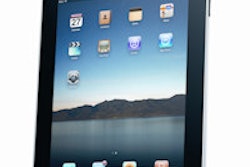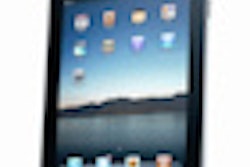The U.S. Food and Drug Administration (FDA) has issued 510(k) marketing clearance for MIM Software's Mobile MIM application, the first mobile image viewing application to receive clearance for diagnostic use on Apple's iPhone and iPad devices.
The clearance covers viewing and making medical diagnoses using iPads and iPhones for CT, MR, and nuclear medicine images (including PET), but the software is not intended to replace full workstations, and it's indicated for use only when there is no access to a workstation, according to the FDA.
While smartphones and tablets such as Apple's iPhone and iPad have drawn interest for their potential in radiology applications, broader clinical use has been held back due to an early 2010 FDA decision to classify Mobile MIM as a class III device requiring premarket approval (PMA) instead of a class II device requiring 510(k) clearance.
The situation changed in the summer of 2010, however, when MIM Software was discussing its appeal of the 510(k) decision with the FDA, according to Mark Cain, chief technology officer. The company was able to identify many of the key issues that concerned them, and it was jointly decided that another 510(k) would be the best way to proceed.
In its evaluation of Mobile MIM, the FDA said it reviewed performance test results on various portable devices, measuring luminance, image quality, and noise in accordance with international standards and guidelines. The FDA also reviewed results from demonstration studies with qualified radiologists under different lighting conditions.
"All participants agreed that the device was sufficient for diagnostic image interpretation under the recommended lighting conditions," the FDA said in a statement.
With Mobile MIM, images are compressed for secure network transfer and sent to the appropriate portable wireless device. Mobile MIM also enables physicians to measure distances and image intensity values, as well as display measurement lines, annotations, and regions of interest, the FDA said.
While there can be significant variations in the display performance of mobile devices, even between mobile devices of the same model, the Mobile MIM application includes sufficient labeling and safety features to mitigate the risk of poor image display due to improper screen luminance or lighting conditions, according to the FDA.



















